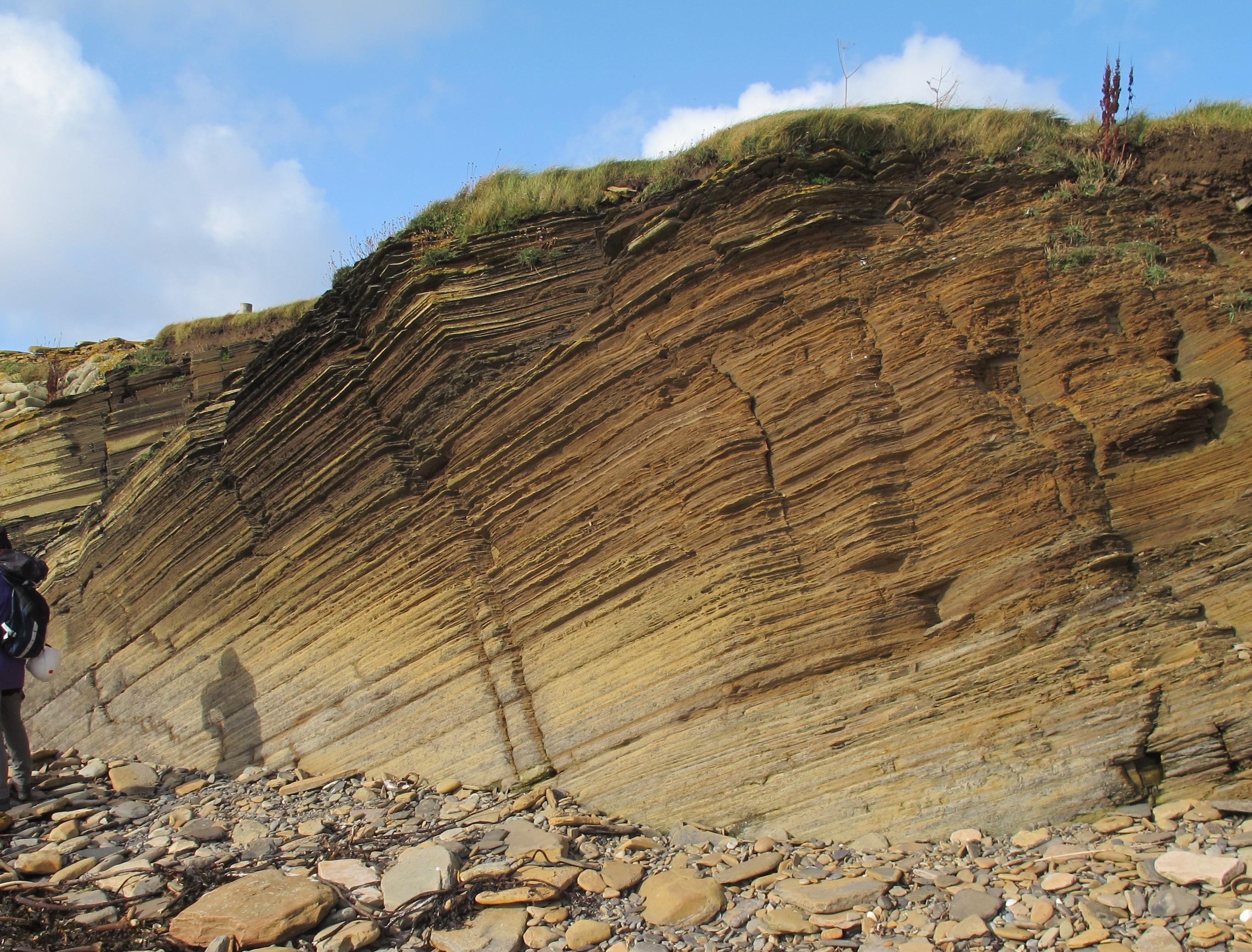Reservoir Rock properties/Trapping
Description
The ability of a solid to transmit fluid is called permeability. This permeability is defined by Darcy's law an can be influenced by properties like grain size, grain sorting, grain roundness and the texture of the rock. An example of that is the fact that rounder grains lead to higher permeabilities. || The ability of a solid to store fluid is called porosity. Voids within the solid make it possible for liquid to be encapsulated by the solid. Processes like compaction decrease the porosity due to the effects of loading. All processes that can be undergone by a potential rock reservoir with burial are summarized as diagenesis || Lateral and vertical changes in rock properties, called heterogenity, can result in changes of physical properties, called anisotropy. These layers, and with that the differences in reservoir quality, can be identified using well logs. || Petroleum geologists should use well data, seismic data and geological knowledge to build a 3D reservoir model. In Delft University of Technology, a process based simulation of barrier bar development as a function of fluctuating see levels. || The final part of the lecture is on carbonates, which are significantly different from classic reservoir rocks. One of the big differences is that most of the material is biogenic. It is not uncommon that carbonates are both the source and the reservoir rock. Carbonate depositional settings and a great variety of carbonate pore types, which influences the permeability, are discussed. || Lecture 6: A trap typically is the final place where oil an gas end up. The most important job for exploration geologists therefore is to find the traps. These traps can be either structural traps, caused by tectonic forces, or stratigraphic traps, which mainly has to do with the way the sediments have been deposited. The most typical traps, where 80-90% of the oil is trapped, are anticlines which are structural traps with arched upper surfaces. || To illustrate the theory further, some case studies on structural traps, stratigraphical traps, combination traps and dynamic traps are presented.
More Episodes
Published 03/21/18
"The main hydrocarbon molecules present in crude oil, like paraffins, naphtenes and aromatics, are discussed. Structural formulas are shown as graphical representations. Moreover, the main method to analyze the composition of oil, gas chromatography, is explained. || After fractionating the crude...
Published 02/28/18
We learned that oil results from kerogen, which in turn comes from organic matter. This oil is then present in source rocks. The source rocks get overpressured and oil moves from the source rocks to the reservoir rocks. Reservoir rocks can be imaged with seismic by geophysicists, and this is also...
Published 02/28/18


